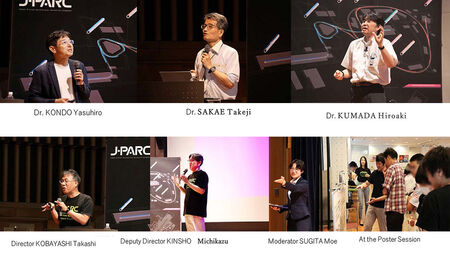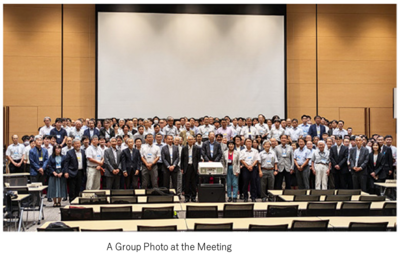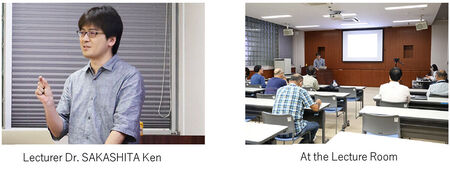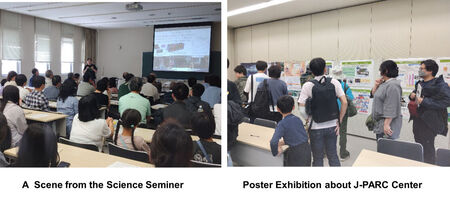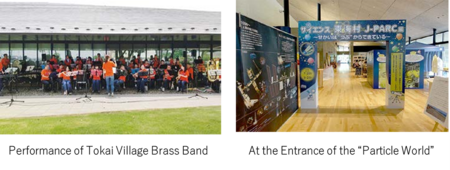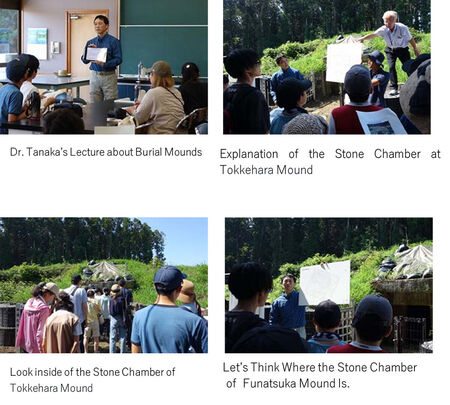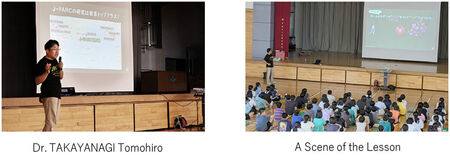J-PARC News July 2024 (Issue #231)
■Observation of a scorched component in the J-PARC Linac Building
On Friday, July 5, at approximately 10:46 a.m., there was a scorched component was observed in a chiller at the Cold Machine Room No. 3 for cooling-water (not a Radiation-Controlled Area) on the 1st floor of the Linac Building. The fire department judged that a fire had occurred.
There was no leakage of radioactive material to the environment, no radiation exposure, and no injuries. There was no impact to other facilities. The cause of the fire incident is under investigation.
We apologize for any concern this may have caused. We will work to ensure that this does not happen again.
KOBAYASHI Takashi, Director, J-PARC Center
■J-PARC Lecture 2024 "Accelerators - Their Principles and Application to Cancer Therapy" was held (July 6th).
It was held at the Tokai Village Industrial Information Plaza (iVil) and 146 people attended.
Dr. KONDO Yasuhiro of the Accelerator Division first explained the configuration, principles, and features of the three accelerators at J-PARC. Next, Dr. SAKAE Takeji, Professor of the Institute of Medicine at the University of Tsukuba/ Proton Medical Research Center, presented the current state of the art in particle therapy, comparing X-ray, proton, and heavy particle beams. Finally, Dr. KUMADA Hiroaki, Professor of the Institute of Medicine at the University of Tsukuba, and Director of Proton Medical Research Center, explained the latest status of BNCT (Boron Neutron Capture Therapy), which can selectively destroy cancer cells, and how the source of neutrons is shifting from nuclear reactors to accelerators.
Before and after the lectures and during breaks, staff members explained the accelerators using posters in the lobby and answered questions from those interested in the accelerators at J-PARC. The audience included cancer survivors and their families, and the question-and-answer session exceeded the scheduled time. We hope that these lectures will help many people understand accelerator research and provide clues to a better future for cancer treatment.
http://j-parc.jp/symposium/lecture2024/ (only in Japanese)
■Discovery of Full Hydration in High Oxygen with the World's Highest Proton Conductivity
- New Material Design Strategy Leads to High Performance Fuel Cells at Medium and Low Temperatures
While current commercial solid oxide fuel cells (SOFCs) operate at high temperatures, there is a growing demand for proton ceramic fuel cells (PCFCs) that can utilize materials with high proton conductivity at lower temperatures. The research group has discovered a new material, BaSc0.8W0.2O2.8, which exhibits the world's highest proton conductivity in the medium to low temperature of 50-500° through a completely new material design strategy. Crystal structure analysis and theoretical calculations with SPICA/BL09 at MLF have clarified factors that contribute to the high conductivity of the material.
The use of BaSc0.8W0.2O2.8 as an electrolyte is expected to lead to the fabrication of high performance PCFCs at lower temperatures and to its application as a clean energy material for a variety of electrochemical devices such as hydrogen pumps and hydrogen sensors.
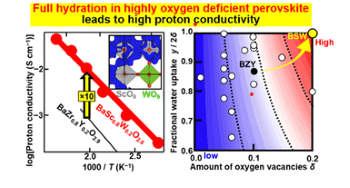
■Neutron Industrial Application Report Meeting for FY2024 Held at Akihabara Conventional Hall and partly online (July 11th- 12th )
This report meeting focuses on matching industry needs to industrial applications for neutrons and muons provided by the Materials and Life Science Experimental Facility (MLF) at J-PARC and the JRR-3 research reactor.
This year, 247 people attended the two-day event. Special presentations were given by Dr. SHOJI Tetsuya of Toyota Motor Corporation on "Measurement Data Analysis of Materials via MI and DX Analysis Platform WAVEBASE" and Dr. HIRAYAMA Tomoko of Kyoto University on “Application of Neutron Beam Analysis for Clarification of Tribological Phenomena".
■Hello Science "J-PARC Long Baseline Neutrino Oscillation Experiment Has Gotten More Powerful" (June 28th)
Dr. SAKASHITA Ken of the Particle and Nuclear Physics Division introduced the role and progress of the neutrino facility at J-PARC.
Tokai to Kamioka (T2K) is a neutrino experiment designed to study how neutrinos change from one flavor to another as they travel (neutrino oscillations). The research group was the first in the world to observe muon-electron neutrino oscillations. Now, to solve the "mystery of how antimatter disappeared from the universe and only matter survived", they conducted an experiment to investigate the difference between the probability of muon neutrinos changing into electron neutrinos and that of their antiparticles, anti-muon neutrinos, changing into anti-electron neutrinos. The experiment found that there could be a difference between them. However, to determine that the change probability is clearly different, more neutrinos need to be observed.
To this end, the accelerator and beamline have been upgraded to increase the number of neutrinos produced by 10%, and ta new type of neutrino detector has been introduced to determine the direction of arrival of the particles and to identify them. In addition, from FY2027, the detector will be upgraded from "Super-Kamiokande" to "Hyper-Kamiokande" to observe more neutrinos.
■Geo Space Adventure (GSA 2024) (July 13th and 14th)
GSA, an extremely popular underground exploration event, was held. Visitors were able to tour the Kamioka Mine tunnels and see Super-Kamiokande. More than 800 people from all over the country participated in this year's GSA. It was the first full-scale event in five years.
A science seminar was held at the event. Dr. NAKADAIRA, Particle and Nuclear Physics Division at J-PARC Center, talked about the T2K experiment. The audience asked about neutrinos and antineutrinos, the T2K experiment, and other topics.
J-PARC and Super-Kamiokande are indispensable for T2K experiments. We would like to continue working together to advance our experiments.
■Summer Special Exhibition: “Science x Tokai-Village x J -PARC” is Being Held Now at History and the Future Community House in Tokai Village (July 20th to September 29th)
The Science x Tokai-village x J-PARC Exhibition -The World is Made Up of "Particles- opened on July 20th , the start of summer vacation. Tokai-village and J-PARC Center sponsored this project where children solve riddles and complete missions to solve the mystery of the beginning of the universe. During this time, children can also take part in workshops with scientists and see an exhibition about the scientists who work in Tokai-village.
At the opening, the Tokai-mura Brass Band entertained visitors with music related to science and space. Many children challenged missions and participated in the science lab.
This exhibition is held until September 29th. Why don’t you visit History and the future community house, which has turned into the "Particle world" ? Let’s solve the riddle of the beginning of the universe together.
■Project Members Visited Tokkehara Burial Mound in Shirosato-Town (July 7th )
The 2nd activity of the project "Muographic Investigation of Ancient Burial Mounds in Tokai" in 2024 was held on July 7th, in sunny weather and temperatures on a par with body temperatures, reminiscent of the end of the rainy season.
To understand "what a stone chamber of a burial mound is" to be seen through with cosmic ray muons from now on, 50 members including 22 students, their parents, and staff visited the Tokkehara mound in Shirosato-town, Higashi-Ibaraki-gun, Ibaraki prefecture, built in the end of Kofun period (late 7th century). In Ibaraki Prefectural Buried Cultural Properties Center "Isekipia Ibaraki", Dr. Tanaka, Professor of Faculty of Humanities and Social Sciences in Ibaraki University, gave an overview of the Kofun period and a lecture on the stone chamber of the Tokkehara mound.
For security reasons, participants could not go into the stone chamber, but they watched it intently as Dr. Tanaka explained it while illuminating the interior with a light. The tour ended with predictions of the location of the stone chamber of the Funatsuka Ancient Burial Mound No. 2 in Tokai Village.
■J-PARC Lesson at Nakamaru Elementary School in Tokai Village ( June 25th)
Dr. TAKAYANAGI Tomohiro of the Accelerator Division at J-PARC Center gave a lesson about J-PARC to 6th graders at Nakamaru Elementary School which is his primary school. Here is what the students had to say: "I want to visit J-PARC." "I thought it was a tough topic, but he gave examples with each explanation, so it was easy to grasp what he was talking about." "I usually get tired when I study for a long time, but I enjoyed it because he talked with a mixture of laughter.
■J-PARC Open House 2024 (September 28th)
On Saturday, September 28th, the J-PARC Center is open to the public under the title "Let's experience Cutting-Edge Accelerator Science in Tokai-village!" You can visit large experimental facilities and accelerators, some of which require reservations. Science cafes and experimental craft workshops are also available to help you explore the mysteries of the universe, matter, and life. Please come and join us!
https://j-parc.jp/OPEN_HOUSE/2024/img/J-PARC_OPEN-HOUSE2024es.pdf
■J-PARC Sanpomichi ㊽ - Accelerator Engineer, Ms. SUGITA Moe’s Success as J-PARC Lecture Moderator -
The audience stops chatting and begins to sit down at 1:30 pm. The 225 seats in the hall are two-thirds full. The lighting in the auditorium gradually dims. The spotlight shines on Ms. SUGITA. It reminds her of being the MC for a band she was in as a hobby.
Ms. SUGITA is an engineering staff member of the Accelerator Division in J-PARC. Since joining the Center in 2021, she has developed and maintained electromagnets and power supplies for the stable operation of the Rapid Cycle Synchrotron(RCS). The reason she takes on the role of "moderator of the lecture," which is different from her own field, is that she could use what she had experienced to help.
She introduces the speaker’s profile and the content of their lectures. She has carefully discussed it with the staff until now. She cannot make a mistake.
Lecture begins. Ms. Sugita goes behind the stage, but she cannot rest easy. This is because she needs to understand and summarize the content of the lecture in order to add her impressions afterwards.
The Q&A has started. Many people, including cancer survivors ask, and answer thought-provoking questions. She would like to hear more but must decide where to stop. Some people in the audience are still raising their hands. She announces the end of the Q&A session in a soft and clear tone.
Ms. SUGITA says that her role as moderator shows her how many people are interested in accelerator-based cancer treatment. Accelerator physics is often seen as supporting technology in beam physics and beam utilization. But these lectures demonstrates that the technology itself can be beneficial to people.
At J-PARC, we expect our young people to gain a wide range of experience and to play an active role in a variety of areas.

